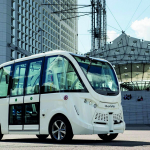When it comes to cybersecurity, things evolve rapidly, and businesses have to make quick, critical decisions about how they’ll go about protecting their digital assets.
In order to achieve the best results, they often resort to two approaches to network security – Cloud DMZ server and Traditional security solutions.
Although both are employed to protect private data, they serve distinct purposes, so if you’re having trouble choosing between these methods, don’t worry anymore! You may pick the strategy that best fits the objectives of your company with the aid of this article.
Understanding the basics of both traditional solutions and a Cloud DMZ in network security is essential for making the right choice. So, without further ado, let’s go over the basics and show you what each one of these methods is for!
Overview of Cloud DMZ
Let’s start by talking about what a Cloud DMZ is. A DMZ, or Demilitarized Zone, is like a buffer zone between a company’s private network and the internet. It helps keep sensitive data safe and cuts down the chances of cyberattacks. Unlike the traditional DMZ setups that sit on physical servers, a Cloud DMZ lives in the cloud. This allows it to be more flexible and grow as the business grows.

Here are some important features of a Cloud DMZ:
- Accessibility: Securely access public services, like web apps.
- Scalability: Easily adjusts to changing workloads.
- Cost Efficiency: Eliminates the need for extensive physical equipment.
Companies like South River Technologies often suggest Cloud DMZs because they offer modern security options that fit well in today’s fast-paced world. Understanding how a DMZ functions in the cloud is key to leveraging its benefits.
What are Traditional Security Solutions?
Now, let’s talk about traditional security solutions. These rely on hardware and software located in the office to keep networks safe. Some examples include firewalls, intrusion detection systems, and antivirus tools. While they can be effective, they do have some downsides. These solutions can be rigid and often come with high maintenance costs.
Here are some key traits of traditional security solutions:
- Physical Infrastructure: They need specific servers and hardware to work.
- Static Protection: They don’t easily adapt to new threats or changes.
- High Maintenance: They require regular updates and constant human attention.
Businesses that already have a solid IT team and predictable workloads might find traditional solutions to be enough. However, as cyber threats keep changing, sometimes these systems can fall behind.
Comparing Cloud DMZ and Traditional Security Solutions
When deciding between a Cloud DMZ and traditional security methods, it’s important to look at what your organization needs. Here’s a quick comparison of their features:
Comparing Key Features
When evaluating a DMZ server versus traditional methods, it’s important to consider key features:
| Feature | Cloud DMZ | Traditional Security Solutions |
| Scalability | Very scalable | Limited by physical hardware |
| Cost | Subscription-based | High initial and upkeep costs |
| Flexibility | Changes easily | Rigid and hard to adjust |
| Accessibility | Available anywhere | Restricted to specific locations |
| Security Updates | Automatic and regular | Manual and sporadic |
For many modern businesses, the adaptability and cost-effectiveness of a Cloud DMZ make it the better choice. On the other hand, traditional solutions might be a fit for organizations that rely on older systems that don’t change much.
When to Choose Cloud DMZ
Choosing a Cloud DMZ in network security can depend on what your organization values most. Here are some situations where a Cloud DMZ could really shine:
- Growing Companies: If you’re expanding, you’ll need security that can grow along with you.
- Remote Work: A Cloud DMZ makes sure that employees working from home can access necessary tools safely.
- Budget-Friendly Needs: Pay-as-you-go options reduce upfront costs, making them more budget-friendly.
- Adapting to New Threats: Automatic updates help defend against new cyber dangers.
But, traditional solutions might still be a good fit for:
Well-Established Businesses: Companies with their own server rooms might want to stick with what they know.
- Complying with Regulations: Businesses facing strict rules might prefer tried-and-true methods.
- Low Cloud Usage: Companies not heavily reliant on the internet can make do with hardware solutions.
Ultimately, understanding what a DMZ is and how it integrates into your network strategy will guide your decision.

In Conclusion
Both Cloud DMZ and traditional security solutions have their strengths. The best pick really depends on your organization and what you hope to achieve. By evaluating factors like scalability, cost, and flexibility, you can make an informed decision.
If you’re looking for solid options for a DMZ to boost your network safety, companies like South River Technologies have great solutions to fit your needs.
Now, how does your organization handle network security? Feel free to share your thoughts with us!







